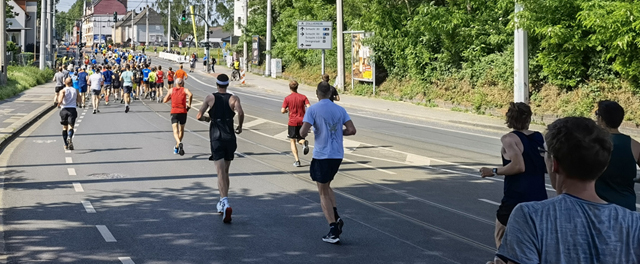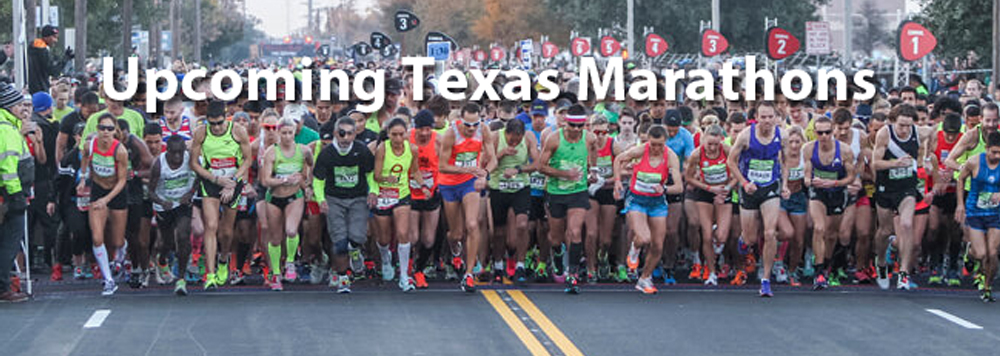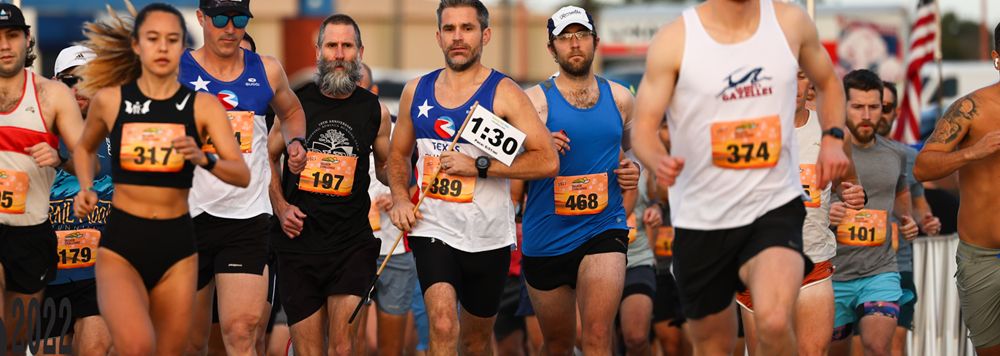We’re entering prime marathon season here in Texas, so naturally runners are looking to set personal bests. Unlike the 5K, 10K, or half-marathon, most folks run no more than one or two marathons a year, so getting it right is more critical than shorter races. The training load and recovery takes a fair amount of time, so runners want to align all of the factors possible for their best shot. Here’s a breakdown of factors that contribute to the best possible outcome.
Choose a fast, flat course. Okay, this one seems obvious, but you’d be surprised how many people sign up for a marathon based on the race’s marketing or destination. When Austin’s Mitch Ammons set his sight on qualifying for the 2024 Olympic Marathon Trials, he targeted the California International Marathon (CIM), known as one of the fastest marathon courses in the country. Result: Mitch broke through last Sunday with a sparkling 2:16:48 qualifier.
Choose a race that consistently has optimal or close to optimal marathon running weather. Perhaps no other factor influences the outcome of a marathon more than weather – even trumping course elevation. And while you can’t control the weather, most marathon websites list the annual average temperature on race day. Again, Mitch chose CIM knowing that the race enjoys consistently good running conditions.
Avoid common training mistakes. In most cases, it’s better to be undertrained than overtrained. Sure, you want adequate mileage and a solid long run buildup of runs up to 20 miles and over, but stretching that buildup too long can result in stale legs and leave you wondering why you didn’t run a faster race on marathon day.
Don’t try anything new. Seems obvious, right? But even veteran marathoners sometimes forget this one. An example would be trying a new quad stretch days before the race and finding that it actually caused your quads to be sore! Another misstep would be suddenly changing up your diet a few days before the race. It’s an easy trap to fall into because we’re all always looking for anything that will give us an edge.
Yes, you should taper. There have been many articles written on tapering versus “peaking” for a marathon, and though both approaches have merit, one thing’s for sure: you’re not going to set a PR on tired legs. You want fresh legs. So yeah, cut down on mileage the week or two before the marathon. The essential difference between tapering and peaking, is that peaking calls for maintaining some short, intense workouts. That’s fine, as long as you don’t suddenly try something radical or new, like 12 times 800 repeats at 5K pace.
Pay attention to all of the aforementioned points and you should up your chances of setting a personal best this marathon season. Happy racing!
Upcoming races: Sunday, January 1 at 9:00 a.m., the Resolution Run 5K at Gregg Clarke Park in Kyle. Sunday, January 8 at 7:30 a.m., the Rockin’ Resolution Race 5K and Half Marathon at Lake Pflugerville.





